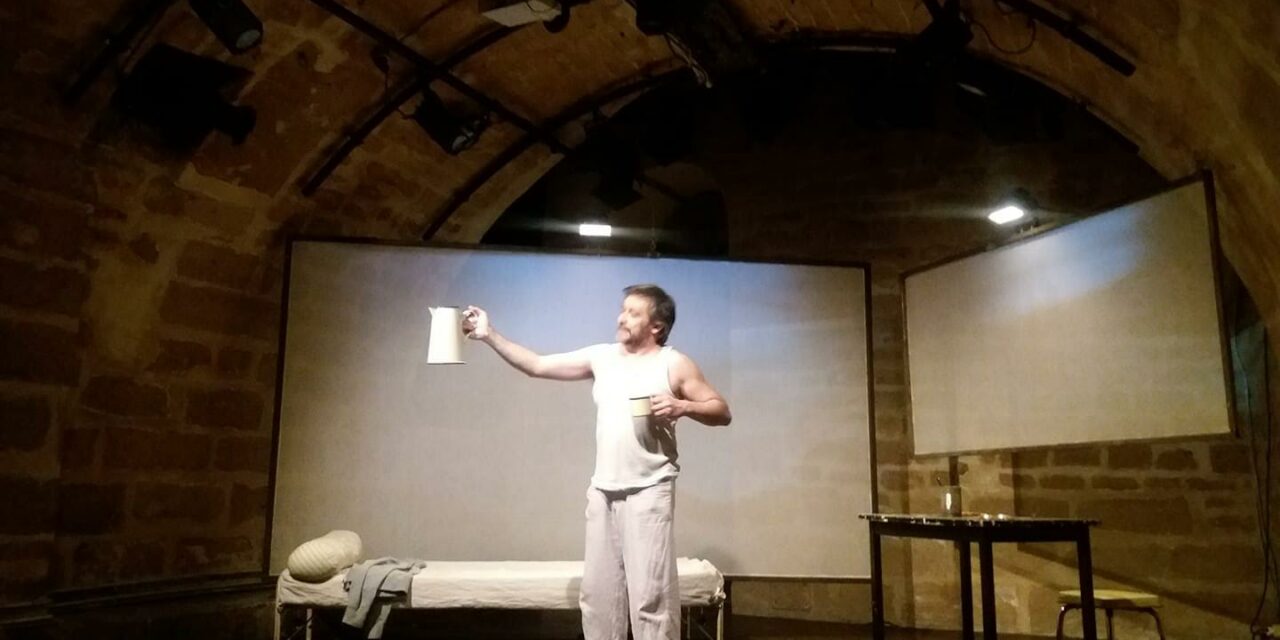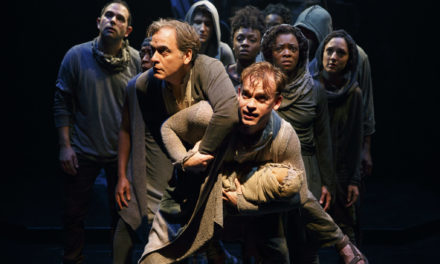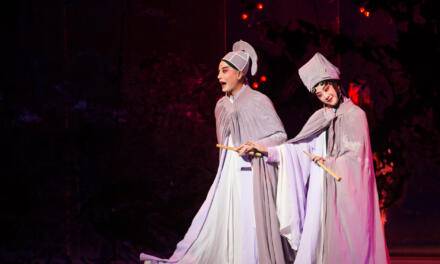Rhinoceros (1959) is one of Eugène Ionesco’s best-known plays, one of the plays with which the great Romanian-French playwright made an iconic name for himself in the history of theatre, beginning with the classicization of the avant-garde. The artistry with which he illustrated a collective psychosis, and especially its instrumentalization by totalitarian ideologies in a Europe that still retained the memory of the Second World War, resulted in the play always representing a serious challenge for directors.
Few people know that some of Eugène Ionesco’s most important plays (Victime du Devoir, Le Piéton de l’Air, etc.) were preceded by homonymous novellas that contained not only the nuclei of the future plays but also their evolution. This is also the case of Rhinoceros, initially written in novella form and published in the literary journal Lettres Nouvelles in September 1957 and, in 1962, in the collection La Photo du Colonel. Generally not considered masterpieces, the novellas are perceived as work sketches of the plays themselves, more for academic critique than for readers, for the simple reason that the plays ultimately surpassed them in complexity.
Theatre de l’Essaïon in Paris (6, rue Pierre au Lard) is running (every Monday until March 30, 2020) Ionesco’s novella, the seed of the play’s ulterior development, directed by Catherine Hauseux. If the homonymous play requires seventeen actors, the novella – in this adaptation – has only one.
Stéphane Daurat, who plays Béranger, makes a veritable tour de force out of his performance, making use of an entire palette of means, from pantomime to monologue, in a remarkable one-man show. Evidently, the novella contributes fundamentally to this minimalistic perspective, but the exceptional directorial vision is no less important. At the same time, the staging itself is a rare bird. Practically, the homonymous novella begins its theatrical journey, departing from the experimentalism of other representations (those too extremely rare) by invalidating the exceptional status, thereby regularizing it. We encounter a highly supple power of mirroring the orchestral in the cameral, or a dive into our sense of reverse perception as we observe the physiology and inventive process of the play, and therefore its original development. The originality of the staging is discreet and appropriate, bringing the text to the forefront and recuperating, on a theatrical level, what was originally written as literature. The influence of the play on the novella is mediated by the director and by the audience’s expectations.
The character’s metamorphosis is one of the strongest points, very finely adjusted to the psyche of the postmodern individual. The representation of the rhinoceros is not a classic one, with coarse costumes lacking in credibility (at the limit of theatrical convention), but rather through an origami totem-rhinoceros that possesses the character, imprisoning him in a delirium that is both mystical and conspiratorial.
The love story with Daisy, appearing in the text as a monologue, gains Hamletian dimensions. Catherine Hauseux’s show is an example of the clearest and most impactful way of transforming drama into monodrama, with the foundation of reconversion into collective drama existing in the audience’s complicit expectations. In essence, amplification is the result of exemplification in the sounding box of the original play’s notoriety. The scenographic intelligence of an origami rhinoceros is telling of our solitary world.
At one point, the character puts the totem-rhinoceros in his pocket and crushes it under his weight. Here we understand the individual pretext and the feeling of interior collapse of the individual that “rhinocerizes” himself or herself and murders his or her master, thus metamorphosing an entire species from the individual to the collective. In Ionesco’s play, this transmission cord is less apparent, as the number of characters there leads to the omission of minimal individualization that cannot be entirely swallowed by collective psychosis.
The ending of the show is a veritable postmodern revelation of the individual saved from what he or she has confected alone: a suitcase full of origami rhinoceroses, to which current representation is added. Possession and redemption overlap, mediated by a biodegradable object that redeems the human psyche like light through a stained-glass window.
Although it is not the first scenic representation of the novella, it is the closest to an Ionescian vision of truth as the relationship between the individual and the collective, negotiated by the relationship between the novella and the play. An extraordinary and unique show.
This post was written by the author in their personal capacity.The opinions expressed in this article are the author’s own and do not reflect the view of The Theatre Times, their staff or collaborators.
This post was written by Darie Ducan.
The views expressed here belong to the author and do not necessarily reflect our views and opinions.


















